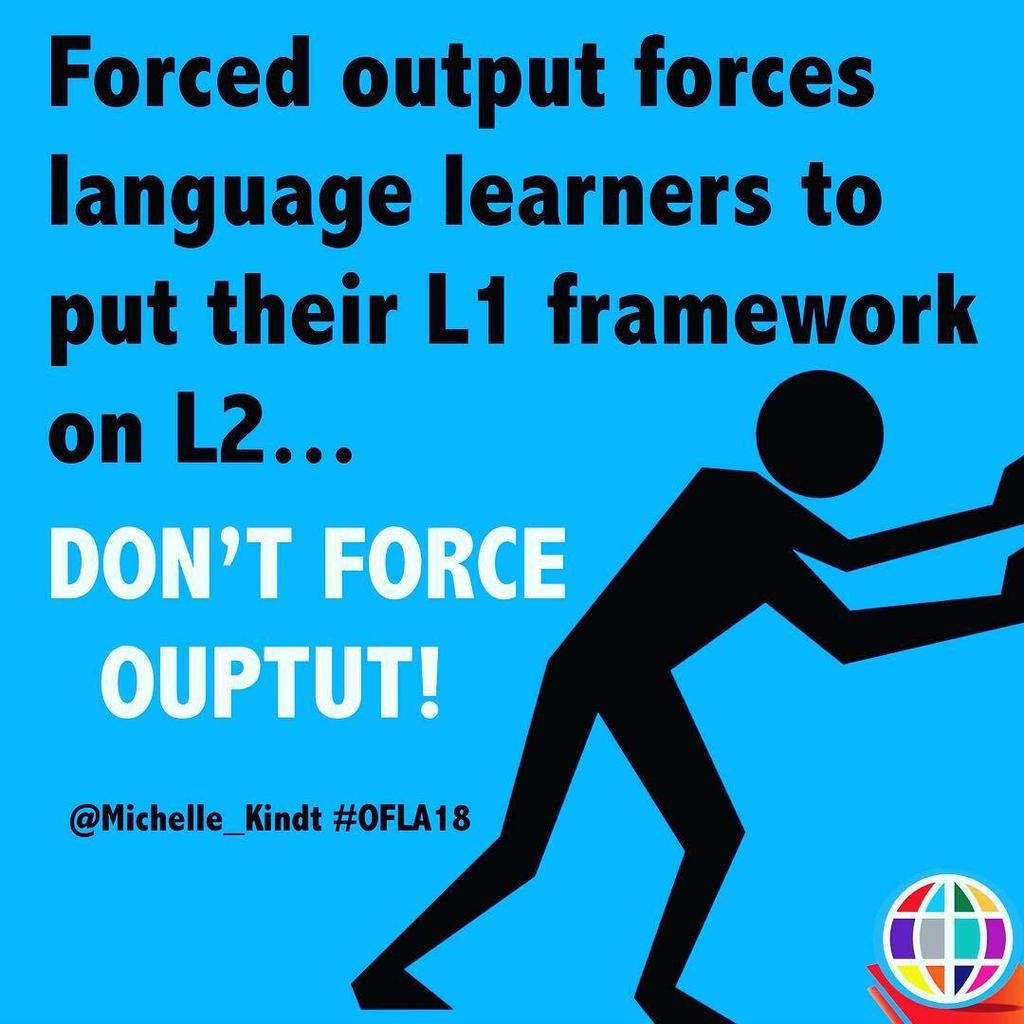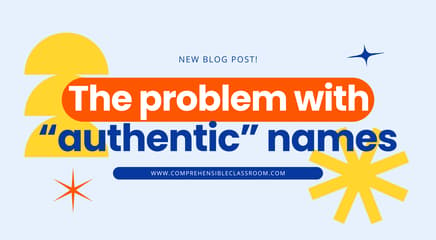What is grammar instruction? What does it do for language acquisition, and what should its role be in a language classroom?

These are some of the questions that a group of enthusiastic language teachers tackled on Friday evening at OFLA with Keynote speaker, Paul Toth (read his bio here). Following Carol Gaab's address at the OFLA awards group, myself and a group of friends and a few teaching heroes (including Teri Wiechert, who had just been presented with OFLA's Distinguished Career award), I approached Paul to tell him to be expecting an email from Diane Neubauer, a friend and master Chinese teacher that is working on her PhD right now (Diane blogs over at Ignite Language, along with Haiyun Lu and Alina Filipescu). One thing led to another, and before the night was out we found ourselves huddled in a group at the hotel restaurant with a queue of questions to discuss with Paul.
In this post, I am going to write out my notes from the conversation (which I scribbled on a series of napkins) along with some personal commentary. If you get excited thinking about these things, I encourage you to join Eric Herman's Acquisition Classroom Forum. You will receive his weekly memo (digestible bits of theory) and access to the member forum, where you can discuss the big ideas of language acquisition and language teaching to your heart's content! In this post, I am going to share a lot of ideas that I don't know the answers to, that I haven't considered, that I haven't dug into. This is--as Sara-Elizabeth would say--me boldly thinking in public. Or perhaps thinking aloud dangerously in public. This post is about questions, not conclusions--and I encourage you to join the conversation.
The starting point for our conversation was the question, "Is or is not consciousness completely disconnected from the development of language?". Paul argues that consciousness is not completely disconnected from development of language. The part of our brain in which language lives and the part of our brain in which grammar lives are different, but they work together in the moment of communication. I expressed that this resonated with me because of my experience at the conference. Since leaving the classroom to be home full-time with my kids, I have noticed that my Spanish proficiency is fading. For this reason, it is really important to me to communicate in Spanish whenever possible when I have the opportunity to be with Spanish speakers.
At OFLA, I got to spend a lot of time with my friend Nelly Hughes (who has edited many of the novels that you know and love using, and who has an amazing store on TpT). While I was speaking in Spanish with Nelly, I was working really hard to say the right thing. I was aware that as words were coming out of my mouth--in real time--my brain was sorting through information that I know in order to produce the language accurately: "oh I need to use subjunctive...should this be preterite or imperfect...how should I say this...?".
So when Paul said that those parts of our brain work together in the moment...well...that described what I had been experiencing throughout the conference. One important thing to point out is that I have studied language for a long time and my proficiency level (at least at some point in time) was Advanced and I am a highly motivated learner. A question that we didn't have time to discuss with Paul was whether there is a "threshold" of acquired language that is needed in order for that conscious interaction to occur.
Paul went on to say that, "THE INTERNAL SCRIPT IN YOUR HEAD COUNTS AS INPUT". Hm...this is interesting to me! To me, "grammar speak" is comprehensible; I understand it. So since I understand those grammar rules, do they work the same way as what we traditionally know to be comprehensible input? We all agreed that the real problem is that we don't have a good definition of Grammar Instruction. In the interest of rejecting the kind of un-contextualized, drill-heavy grammar instruction that most of us grew up with, we have perhaps thrown out the baby with the bathwater. When we hear "grammar instruction", we think "drills". But maybe if we redefined grammar instruction, we would not hate it so much. Could we define it as... ..."Drawing attention to the fact that something grammatical is transpiring"? (Carol Gaab brought up the Noticing Hypothesis when Paul made this statement).
Paul pointed out that, "We are conscious beings. We want to know what is going on and why." -- so how could grammar instruction be categorically harmful or helpful? Another thing is for certain: Grammar Instruction needs to be more meaningful (happening at the right moment) to be effective. When should grammar instruction be delivered? Paul compared grammar instruction to directions. Imagine that you are in a new city and you need to get to a destination across town. Consider these three scenarios:
- You ask for directions at the front desk of your hotel, and they recite a long list that references cardinal directions and street names (go north on Pierre Street until you reach Seventh, then head East for six blocks and continue north on Landon Ave.....).
- You spot a paper map on the binder on your hotel room desk, and you look for the destination on the map. You make a quick mental note of the most simple route to get from here to there.
- You pop the destination into the Maps app on your iPhone and start walking, listening to play-by-play instructions (heck, if you're really feeling crazy you use Waze and then have so much fun jamming out to your Boy Band directions that you make it in record time--Elissa McLean introduced me to that feature ;-))
Now, which of those scenarios was most effective? Consider how each one might compare to grammar instruction. In Scenario 1, you give grammar instruction before students have ever seen the language that the rules attempt to describe. In Scenario 2, you show students the language first and then expose a rule. In Scenario 3, you help students notice grammatical features in real time, as they interact with input and output. To put it another way, where are your learners now, and what do they need to engage meaningfully in the language at this moment? The Goldilocks analogy not only works for authentic resources , but for grammar instruction as well: How much information is too much? How much is not enough? And how much is just right?
Further considering what grammar instruction should look like and ultimately achieve, Paul gave this analogy: The purpose of our classes is for students to be able to use language as a tool to do things in the real world. If Chapter One in your textbook features "The Hammer" (representing grammar feature X), what do you do with it? Are you going to build something (communicate), or are you going to bang around (drill)? "Having rigid rules is a disservice." This statement applies not only to grammar instruction, but also to questions such as 90 percent target language use and the exclusive use of authentic resources in class:
- Use L2 as much as possible and English only when necessary.
- In preparing students to be and do things in the real world. What is more important: the end (students being able to be and do things in the real world), or the means (the strategies and materials that you use to prepare students for that end: authentic and teacher-created materials, novels written for language learners, digestible grammar information, etc.)?
- What about the role of output? Is output nothing more than a byproduct of input? Paul agrees that it is certainly more important for intermediates than it is for novices, although he stated that labeling it a "byproduct" is an oversimplification that downplays the role of agency in the language learner.
Finally, I intended to ask Paul for his thoughts on this statement that @Michelle_Kindt shared in her morning workshop, but by that time there were like five questions in queue from other people in the conversation, and we said goodnight before I got my answer. Next time ;-)

Please join me in thinking boldly about these things in public, and join Eric's Acquisition Classroom! We must think critically about what we do and why, and these are important questions to ask--and to continue to ask even after you are reasonably confident with your answers. I am looking forward to a post on the CI Peek blog in the coming weeks in which Paul will keep the conversation going!! Be sure to subscribe so that you get notified when it comes out!! And as a closing question--how would YOU define Grammar Instruction??





